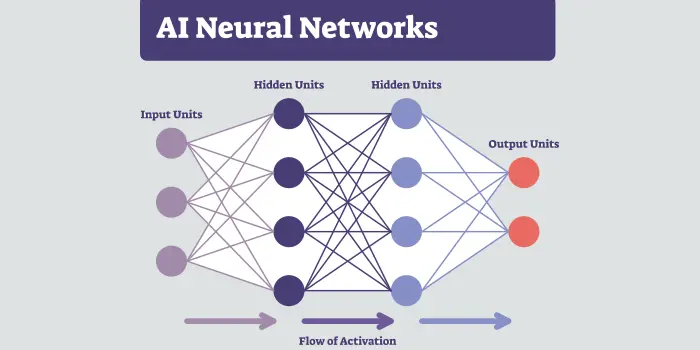AI Glossary
Neural Networks – Short Explanation
Neurons are cells in the body that transmit information to other cells, including muscles. A neural network takes its name from these biological neurons, as it is loosely modeled on the structure of the human brain. Neural networks are computer algorithms designed to recognize patterns and relationships in data. Once trained, they can efficiently classify, cluster, or predict outcomes – often without the need for manual labeling – making them a powerful tool in many AI applications.
Neural networks have risen and fallen in popularity over the decades, but recent advances in deep learning and modern processing power have sparked a strong resurgence.

Understanding Neural Networks in the World of AI
Neural networks belong to the broader family of machine learning models. They are composed of layers of interconnected processing nodes, or “neurons,” through which data passes in a structured, feed-forward manner. Each node receives input, processes it, and passes it on to nodes in the next layer.
Tip:
Neural networks learn best from large volumes of domain-specific, labeled training data. Whether you’re building models for image recognition, speech processing, or text classification, the quality of your datasets can significantly impact performance.
LXT provides customized data collection and annotation services that power efficient, scalable neural network training.
During training, each connection between nodes is assigned a weight, and each node has a threshold. As data flows through the network, these weights are summed and compared to the threshold. If the threshold is exceeded, the information continues to the next layer. Initially, these weights are random. But through repeated training using labeled examples, the network adjusts them – learning to produce accurate outputs that match the intended results.
